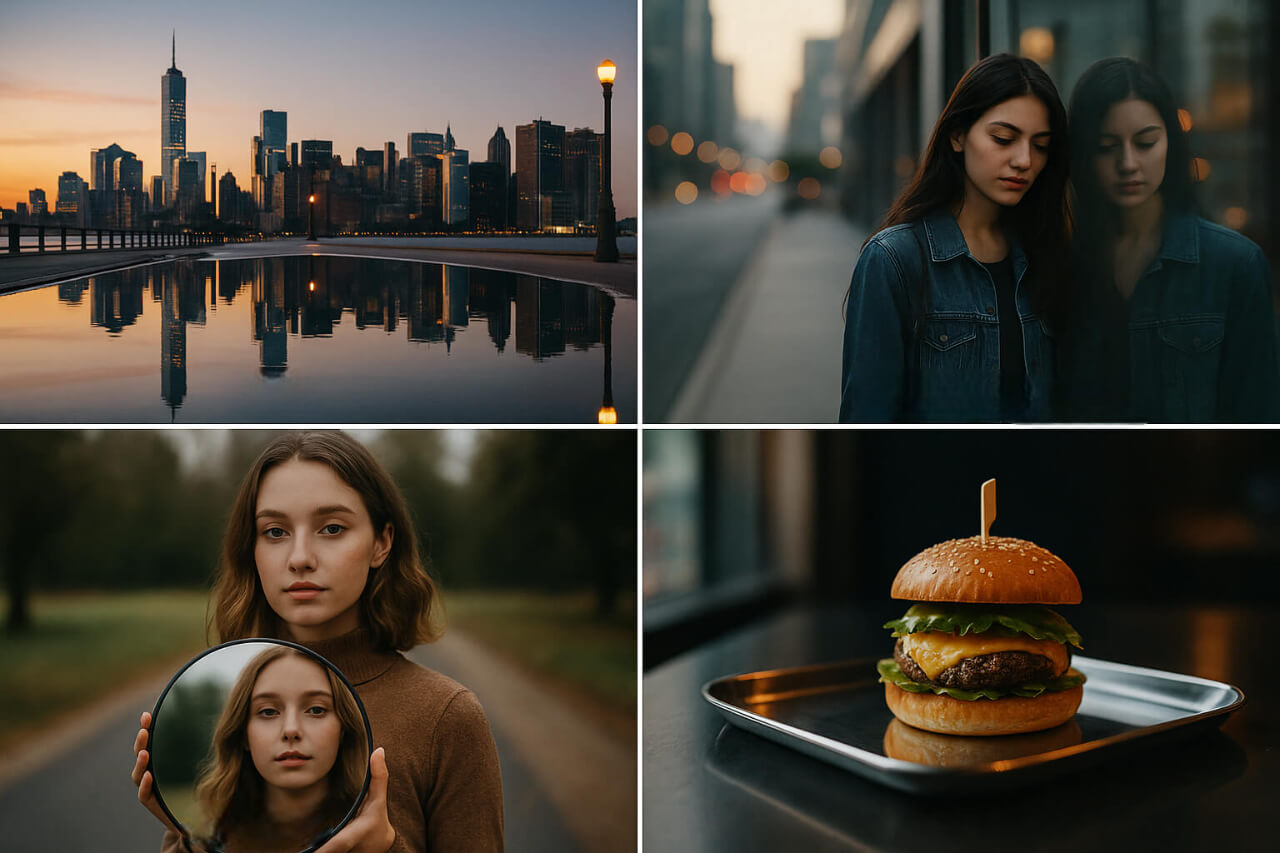May 21, 2025

Reflections are a powerful storytelling tool. From glass buildings and still lakes to puddles after the rain, reflective surfaces allow photographers to introduce depth, symmetry, balance, and even emotion into their frames. In fact, mastering reflections can set your work apart—just like mastering cinematic wedding photography does for professionals.
Whether you're a beginner or a seasoned shooter, using reflections creatively adds that extra layer of visual intrigue, much like artists who specialize in double exposure photography to blend moments and moods.
Water is one of the most versatile elements to work with when creating reflective compositions. Still water creates a mirror-like effect, allowing you to capture beautiful symmetry and layered visuals in landscapes or street photography.
Why Water Works: Water's reflective quality enhances the scene's mood, adding depth and a sense of balance. The reflection of the sky, trees, or cityscape in a puddle can dramatically elevate the visual interest of an image.
Best Time to Shoot: The best time to capture water reflections is during the golden hour, when the light is soft and warm, or immediately after rain when the surfaces are wet and smooth.
Windows and glass panels offer a unique opportunity to shoot through and capture urban or architectural reflections. They serve as natural frames for subjects, allowing you to introduce additional elements into the composition, especially in candid or documentary-style photography.
Why Glass Works: Glass surfaces, especially in city environments, often feature intricate reflections of buildings, people, and street scenes. This can create dynamic compositions where the reflection adds context and atmosphere to the subject.
Wedding Photography Application: In Cinematic Wedding Photography, glass reflections can be used to create emotional or cinematic depth. A bride's reflection in a glass window or mirror, for example, could symbolize transition, reflection, or anticipation, adding emotional resonance to the shot.
Mirrors are incredibly versatile tools in both portrait and product photography. They can frame the subject in a unique way, duplicate reality, or offer a different perspective. Mirrors allow you to play with symmetry, distortions, and reflections in ways that other surfaces cannot.
Why Mirrors Work: Mirrors can create dynamic compositions by reflecting part of the scene that’s outside the frame or by simply flipping the perspective of the subject. This can result in a visually engaging, sometimes surreal photograph.
Shiny surfaces such as polished floors, metal countertops, or even car exteriors provide subtle yet sophisticated reflections. These surfaces are especially useful in product photography or food photography where you want to add a touch of elegance without distracting from the subject.
Why Shiny Surfaces Work: Shiny surfaces reflect light and colors beautifully, adding depth and dimension to otherwise flat or mundane compositions. These surfaces can capture the reflection of the product or food item, making them look more polished and appealing.
Product and Food Photography Application: In Product Photography, shiny surfaces like metal trays or marble countertops subtly enhance the composition by reflecting the subject. For example, a sleek metal tray or glossy surface can elevate a food product’s presentation without overshadowing the main subject.

Reflections can come with distractions like dust, smudges, or photo bombers. Use tools from this object removal guide to eliminate unwanted elements without harming your composition.
Tip: Apply color grading and color correction with care — if unsure, read about their key differences here to maintain the natural tone of the reflection.

Absolutely. Images using reflections — especially symmetrical, surreal, or emotional compositions — tend to perform well on photography platforms. Upload your best shots to the top photo-selling websites in 2025 and follow the passive income selling strategy to monetize your work.
Not sure how to price your creative portraits or landscapes? This pricing guide will help you set fair rates based on experience, quality, and use rights.
Reflections open up a dimension in photography where imagination meets reality. Whether you're composing dreamy lake landscapes or urban portraits that blend into glass — mastering the art of reflections is your ticket to deeper, more compelling imagery.
So next time you’re out shooting, don’t just look forward — look around, down, and sometimes even back.
Stay up to date with the newest tips, gear reviews, and step-by-step guides to elevate your photography journey from home and beyond.